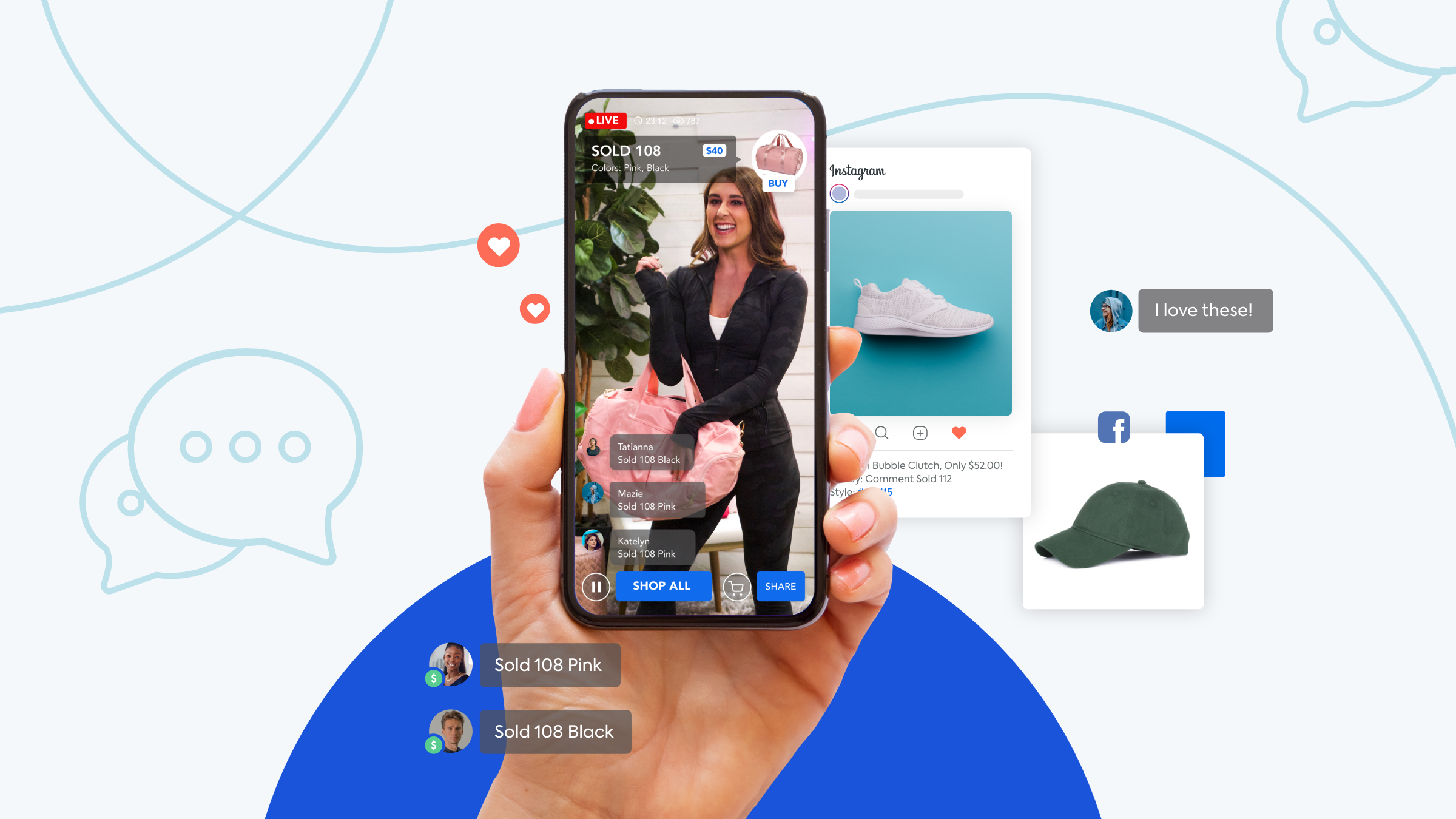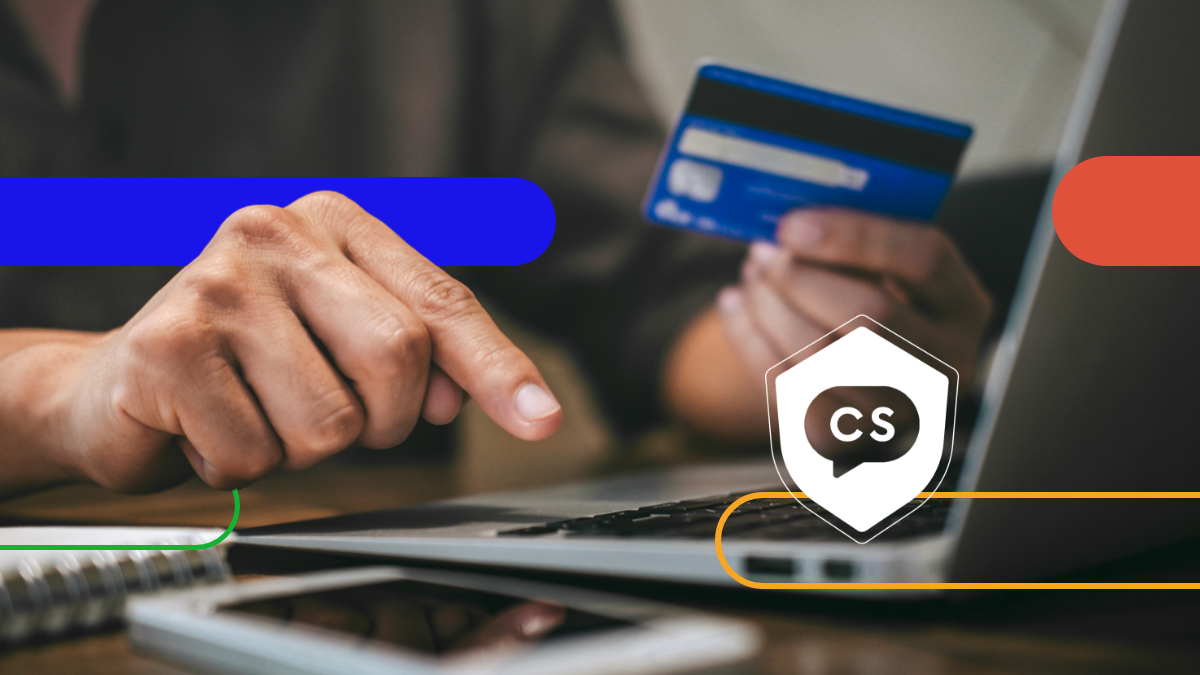If you’ve been selling online for a while, you’re probably tracking your overall sales, individual product sales, and average order value. Another key e-commerce metric that you should be aware of is customer lifetime value (CLV). In general terms, this is the value that customers bring to your business for the amount of time they’re shopping with you.
What is Customer Lifetime Value?
The duration of time a customer makes purchases from a retailer is the “lifetime” of that customer relationship. The amount of profit generated by the money customers spend throughout that relationship contributes to the lifetime value of an individual customer.
How to Calculate Customer Lifetime Value
Understanding how much revenue is generated by a customer during the lifetime of their transaction history with a retailer helps merchants forecast profitability, set customer acquisition budgets, and plan for growth.
A basic lifetime value formula is calculated by multiplying the average value of each sale by the number of transactions and the total time that an individual customer has been making purchases. This is otherwise known as the “retention time period.”
To calculate customer lifetime value, multiply the lifetime value by your profit margin.
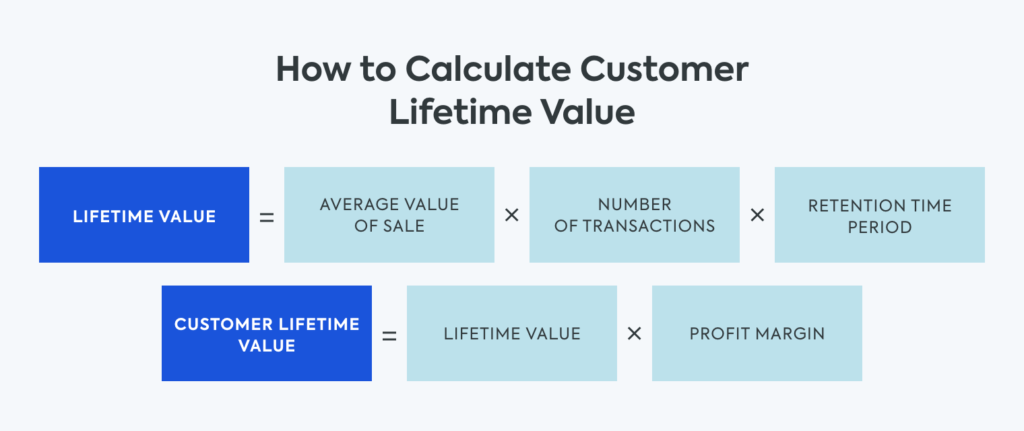
Some businesses use the formula for calculating customer lifetime value by multiplying the number of transactions by the average transaction size by the retention period without factoring in the profit margin.
An example of calculating customer lifetime value without the profit margin would be to imagine a customer who has been buying apparel from a boutique twice a month and spending an average of $35 per visit for three years.
That customer’s lifetime value would be $35 x 2 x 12 x 3 = $2,520.
What if the retailer had been increasing that customer’s average order value to $50 per visit by offering accessories as a helpful upsell? The increased customer lifetime value would be $3,600 over the course of a three-year period and represent a gain of 42.5%. The profit margin will vary for each business by the types of products sold, their original cost of goods, and retail pricing.
How Does Customer Lifetime Value Affect Your Bottom Line Over Time?
The amount of time between the date that a customer was acquired to the date of their last purchase is considered a customer lifespan. Retailers who study customers’ habits can see how they affect their businesses. Sporadic sales and customer churn characterize shorter lifespans. Longer lifespans are characterized by identifiable purchasing patterns, repeat sales, and responses to offers.
Longer lifespans with more frequent purchases at higher average order values contribute to a healthy profit margin.
Misconceptions About Customer Lifetime Value
Once you have a general idea of customer lifetime value for your business, it’s easy to think that’s all you need to do. To have a deeper understanding of the value of your customers, look beyond average CLV. Grouping customers into segments by common purchasing patterns and other behavior traits enables you to tailor marketing and communications to customers’ individual needs and buying habits.
When you separate customers into clearly defined segments, it’s easier to create targeted, more personalized communications and offers that get customer response.
Retailers increase the chance that customers will make more purchases at higher average order values over a longer time when they answer the needs of individual customers.
Responding to Changes in the Customer Journey
The customer journey is how customers evaluate products to decide to make purchases. Businesses used to perceive consumers’ decision-making as a linear, funnel-driven process. Consumers would be contacted via advertising or marketing communications to learn about brands and products, then move through a decision-making process that ended in a purchase.
Several buying options may be considered initially, influenced by marketing outreach, while buyers narrow down the options to the product they choose to buy.
In recent years, the customer journey pattern has changed, and the decision process has become more of a circular loop. Consumers who make purchases consider their post-purchase experience with products and brands to influence whether to make repeat purchases.
Rather than being contacted via advertising and marketing channels, consumers reach out directly to brands and retailers to seek information.
Word-of-mouth avenues, such as social media and reviews, have become more critical. Retailers have to become proactive and consistent in their efforts to influence these communication channels.
When considering making repeat purchases from a particular seller, the post-purchase experience is more important to consumers. They pay attention to how retailers treat them after making their purchase, and that treatment influences their decision to continue the relationship by making repeat purchases from the same retailer. As a result, post-purchase follow-ups, including customer service and support, have become a more significant factor in repeat purchase consideration.
Successful live sellers know their customers like staying engaged. Following up with customers about their purchases during live selling sessions keeps the momentum going. Asking how they like the products creates natural interaction between the retailer and customers, and helps to transition to other subjects including accessories that may complement the original purchase or upsells, upcoming sales, and new products.
How Live Selling Can Increase Customer Lifetime Value
Since most U.S. shoppers would rather be watching videos about products than reading product descriptions, a large potential audience is already receptive to live selling. Retailers who use live selling can address their customers in a friendly, personal way that creates and nurtures trust, and they can reach them online anytime. Customers’ individual connections with retailers help build brand affinities and feelings of trust, which foster stronger personal relationships and repeat sales.
Live Selling Makes it Easier for Customers to Buy
Retailers who go live regularly or weekly for at least an hour per live selling session can make as much as $300 per minute with a multichannel live commerce platform like CommentSold. Customers can make purchases directly from the live stream without leaving the video, so they don’t miss out on any actions. They can also “like” or favorite products and post comments to the host and other viewers.
Since purchases are made from live sales with a single click, buying from a live sale is much easier and quicker than clicking from an email to a website to complete a purchase.
When retailers use live selling to reach their customers, they often get to know their customers personally. The personal interactions from live selling create repeat customers who tune in regularly because they enjoy interacting with the hosts.
Since customers are tuning in regularly, they are also more easily influenced to make repeat purchases by having their customer service and support questions answered immediately by retailers during live sales sessions.
Using Live Selling to Appeal to Specific Customer Segments
Retailers can go live to target and reach customer segments in a variety of ways:
- Product demonstrations
- Question and answer sessions
- Celebrity or influencer guest appearances
- Special product introductions and promotions
By going live to interact with specific customer types, retailers make customers feel important and appreciated by focusing on their needs and addressing them individually.
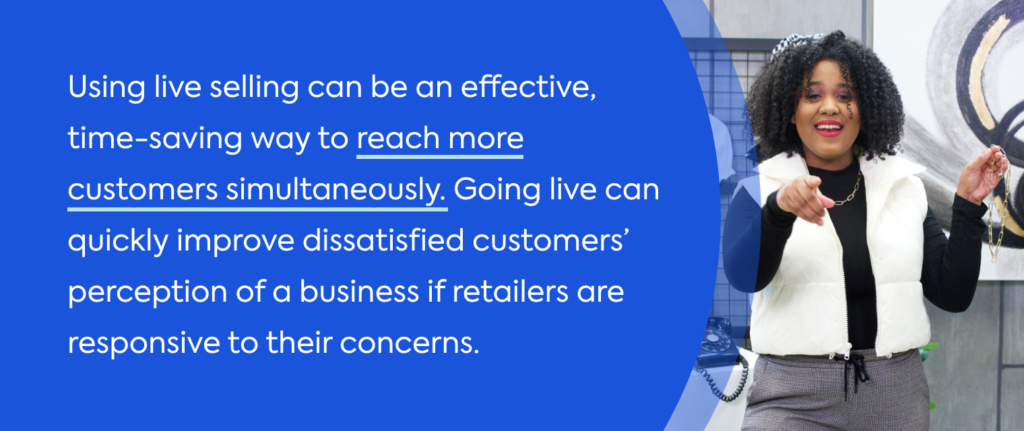
Live Selling as a Way to Improve Customer Service
Most businesses know that poor customer service affects customer loyalty, but they might not know how detrimental bad reviews are. When customers encounter lousy customer service from a company, they don’t just leave. It’s common for dissatisfied customers to tell anywhere from nine to 20 other people, and they often switch to a competitor.
Bad customer service is expensive; it costs businesses $62 billion per year in lost sales. If their concerns aren’t addressed, customers are 91% less likely to do business with a retailer that they’re unhappy with.
Dissatisfied customers are a valuable segment for businesses to target, and companies that promptly address unhappy customers can win them back. By going live to address their concerns and answer questions in real-time, retailers can recover trust and create opportunities to win back their business. While appealing to unhappy customers on live video may seem unpleasant, it can work more quickly than other avenues of communication to create positive customer sentiment and improve customer retention, which increases individual customer lifetime values and positively affects the bottom line.
Using live selling can be an effective, time-saving way to reach more customers simultaneously. Going live can quickly improve dissatisfied customers’ perception of a business if retailers are responsive to their concerns.
Some ideas for going live to win back unhappy customers are:
- Addressing product quality concerns or defects with a resolution plan such as product recalls or replacements.
- Addressing complaints relating to product installation, usage, fit, or maintenance by hosting a demonstration.
- Addressing customer service issues and call center problems by answering customer questions directly.
- Educating customers about product features.
Live Selling Keeps Customers Feeling Valued and Engaged
If negative feedback has been successfully addressed by retailers, customers are re-engaged as a new segment that they can continue live selling to, as they would with other customer segments.
Here are some tips from the most profitable live sellers for continuing to keep customers engaged:
- Remind shoppers to shop the replay of the video, just as if it were live.
- Mention other ways to stay connected, such as your website, social media channels, mobile app, and upcoming events.
- After the live sale, check with your team to discuss what worked and what needs improvement. Review the Live History tab in your CommentSold dashboard to find out which items you sold the most of, when you had the most viewers, and which channels had the most success.
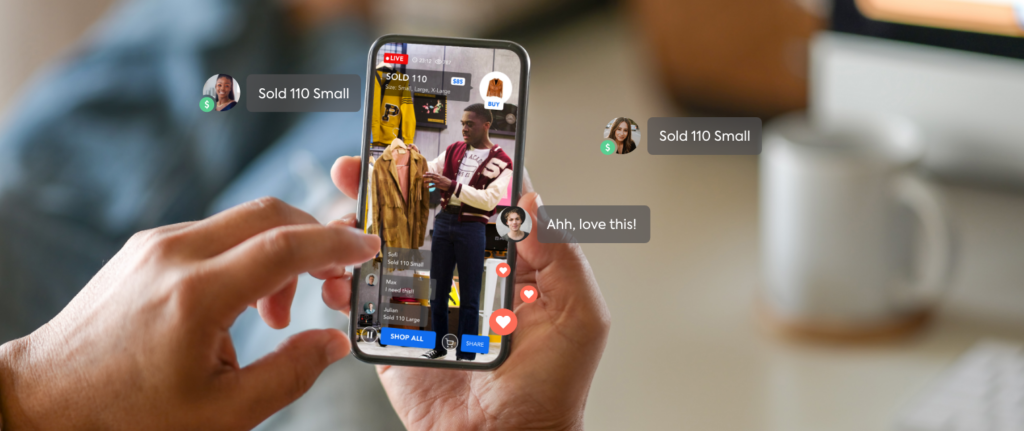
The Takeaway
Calculating a baseline for customer lifetime value is just the beginning for retailers who want to increase customer lifecycles and profit margins to improve customer lifetime value. Focusing on retention can create additional profit from existing customers, and retailers can create segments that appeal to customers with personalized offers and communications.
Live selling can improve customer lifetime value by shortening the decision process, increasing average order value, and resolving customer service issues to improve retention.

